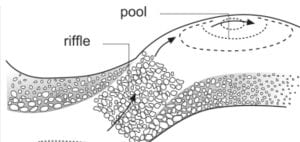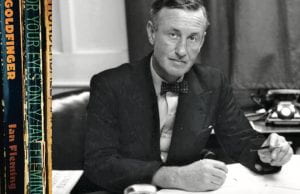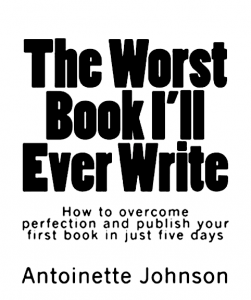 Well, dear bloggers, this may shock you—I am on a long vacation but have no intention to write another book. That’s right, it’s about celebration—celebrating my wife’s very special birthday in Paris. So, writing will take a back seat, though that’s not to say that I won’t find inspiration in being in different places and watching out for interesting characters or settings for my next novel. Will it be a thriller set in Vienna, or a romantic novel based in France? Who knows? The most wonderful thing about writing is that it has few bounds, and the richer the experience (either good or bad) can result in a more satisfying read. Well, that’s the intention.
Well, dear bloggers, this may shock you—I am on a long vacation but have no intention to write another book. That’s right, it’s about celebration—celebrating my wife’s very special birthday in Paris. So, writing will take a back seat, though that’s not to say that I won’t find inspiration in being in different places and watching out for interesting characters or settings for my next novel. Will it be a thriller set in Vienna, or a romantic novel based in France? Who knows? The most wonderful thing about writing is that it has few bounds, and the richer the experience (either good or bad) can result in a more satisfying read. Well, that’s the intention.
So, roll on Singapore, Vienna and so many other places – some we have been to before and some that are new. I must confess that my writing is richer from having been to unique and special places and I am grateful for the opportunity. I also feel obliged to share some of these with my readers. They add detail and authenticity to my writing—a firm foundation for the action. Which raises the question—how accurately do I write? The answer is ‘mostly’. I do take literary licence at times, but only to propel the action. where necessary :-).

 I value my Beta Readers. Like gold, they shine bright and their feedback is invaluable. A keen reader of thrillers – who has devoured over 30 books this year so far – has just finished my book. He was tasked with general feedback, rather than detailed analysis. The golden nugget for me was his comment that he felt the story only got flowing with the submarine action. This got me thinking about the sequence of chapters and made me realise that I could bring the underwater action forward. After some heavy cut-and-paste, this action now begins at Chapter 3 and the story is better paced and more engaging. My reader made a few other passing comments which has led to further tweaks and a better novel. This one made me smile;
I value my Beta Readers. Like gold, they shine bright and their feedback is invaluable. A keen reader of thrillers – who has devoured over 30 books this year so far – has just finished my book. He was tasked with general feedback, rather than detailed analysis. The golden nugget for me was his comment that he felt the story only got flowing with the submarine action. This got me thinking about the sequence of chapters and made me realise that I could bring the underwater action forward. After some heavy cut-and-paste, this action now begins at Chapter 3 and the story is better paced and more engaging. My reader made a few other passing comments which has led to further tweaks and a better novel. This one made me smile; The water in a flowing river ripples over rocks and this keeps it fresh. I hope my stories work like that—like a flowing stream that has a few eddies and a few quiet ponds, but then races downhill over rapids to arrive full of oxygen and life. Ask yourself this question as a writer; does my writing suck oxygen from the reader or pump oxygen into them? I have had the privilege of taking high school students down New Zealand’s Whanganui River. By the end of the trip they were all looking forward to more rapids and became exited when they could hear the roar of water ahead of them. Stories can be like that too.
The water in a flowing river ripples over rocks and this keeps it fresh. I hope my stories work like that—like a flowing stream that has a few eddies and a few quiet ponds, but then races downhill over rapids to arrive full of oxygen and life. Ask yourself this question as a writer; does my writing suck oxygen from the reader or pump oxygen into them? I have had the privilege of taking high school students down New Zealand’s Whanganui River. By the end of the trip they were all looking forward to more rapids and became exited when they could hear the roar of water ahead of them. Stories can be like that too.
 What to do on a cold and rainy day? I could finish painting the spare bedroom, but the weather is damp and the paint won’t dry very well. I could take my wife out for a coffee, but she is ill and resting. I could keep editing my new book—or, rather, what I call fine-editing since the major editing is finished. No, I need a new inspiration. So, I decide to work on my first book; produce a new cover, revise the first chapter and update the About the Author page. My goal is to have this done in three days. Meanwhile, my darling publisher Amazon have changed their Kindle format from .mobi to .pub, so that requires more work :-). The next day, I have a head cold and don’t feel like doing much at all. But, the weather is warmer and the painting is almost finished. I’m praying for a better week ahead and a new-look to the bedroom as well as my first book. More news to follow if all goes well. {PS: good progress on both the bedroom renovation and book revisions. The text changes are done and have been uploaded to Amazon. Now I am working with my illustrator with final touches to the cover. All will be revealed soon}
What to do on a cold and rainy day? I could finish painting the spare bedroom, but the weather is damp and the paint won’t dry very well. I could take my wife out for a coffee, but she is ill and resting. I could keep editing my new book—or, rather, what I call fine-editing since the major editing is finished. No, I need a new inspiration. So, I decide to work on my first book; produce a new cover, revise the first chapter and update the About the Author page. My goal is to have this done in three days. Meanwhile, my darling publisher Amazon have changed their Kindle format from .mobi to .pub, so that requires more work :-). The next day, I have a head cold and don’t feel like doing much at all. But, the weather is warmer and the painting is almost finished. I’m praying for a better week ahead and a new-look to the bedroom as well as my first book. More news to follow if all goes well. {PS: good progress on both the bedroom renovation and book revisions. The text changes are done and have been uploaded to Amazon. Now I am working with my illustrator with final touches to the cover. All will be revealed soon} “I have a charming relative who is an angry young littérateur of renown. He is maddened by the fact that more people read my books than his. Not long ago we had semi-friendly words on the subject and I tried to cool his boiling ego by saying that his artistic purpose was far, far higher than mine. He was engaged in “The Shakespeare Stakes.” The target of his books was the head and, to some extent at least, the heart. The target of my books, I said, lay somewhere between the solar plexus and, well, the upper thigh. These self-deprecatory remarks did nothing to mollify him and finally, with some impatience and perhaps with something of an ironical glint in my eye, I asked him how he described himself on his passport. “I bet you call yourself an Author,” I said. He agreed, with a shade of reluctance, perhaps because he scented sarcasm on the way. “Just so,” I said. “Well, I describe myself as a Writer. There are authors and artists, and then again there are writers and painters.”
“I have a charming relative who is an angry young littérateur of renown. He is maddened by the fact that more people read my books than his. Not long ago we had semi-friendly words on the subject and I tried to cool his boiling ego by saying that his artistic purpose was far, far higher than mine. He was engaged in “The Shakespeare Stakes.” The target of his books was the head and, to some extent at least, the heart. The target of my books, I said, lay somewhere between the solar plexus and, well, the upper thigh. These self-deprecatory remarks did nothing to mollify him and finally, with some impatience and perhaps with something of an ironical glint in my eye, I asked him how he described himself on his passport. “I bet you call yourself an Author,” I said. He agreed, with a shade of reluctance, perhaps because he scented sarcasm on the way. “Just so,” I said. “Well, I describe myself as a Writer. There are authors and artists, and then again there are writers and painters.” More about character flaws can be found
More about character flaws can be found 
 Don’t you love this book title? I remember reading somewhere that an author’s first book is ‘always their worst’. I loathed that thought and was determined to disprove it. Yet, the final draft of my first book was so rough that I had to completely re-edit and improve it.
Don’t you love this book title? I remember reading somewhere that an author’s first book is ‘always their worst’. I loathed that thought and was determined to disprove it. Yet, the final draft of my first book was so rough that I had to completely re-edit and improve it. Author
Author